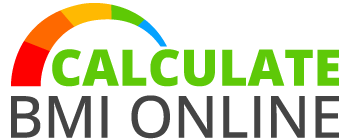Top 10 Myths About BMI You Probably Believe
Top 10 Myths About BMI You Probably Believe
Body Mass Index (BMI) is one of the most widely used tools to estimate healthy weight ranges. But despite its popularity, there’s a lot of confusion surrounding what BMI actually tells us — and what it doesn’t. Over time, several myths have emerged that make people misunderstand BMI, its purpose, and its limitations.
In this comprehensive guide, we’ll debunk the Top 10 Myths About BMI that most people believe. By the end, you’ll have a clear, evidence-based understanding of BMI — and why it’s just one piece of the health puzzle.
Myth 1: BMI Accurately Measures Body Fat
Many people assume BMI is the same as body fat percentage. That’s not true. BMI simply uses your height and weight to estimate whether your weight falls into categories like underweight, normal, overweight, or obese. It doesn’t measure muscle mass, bone density, or fat distribution.
For example, a muscular athlete may have a high BMI due to increased muscle mass, not excess fat. Conversely, someone with a normal BMI may have high body fat and low muscle tone (a condition sometimes referred to as “normal weight obesity”).
Key takeaway: BMI is a general screening tool, not a diagnostic tool for body composition.
Myth 2: BMI Works the Same for Everyone
BMI was originally developed in the 19th century by Belgian mathematician Adolphe Quetelet as a population-level measure. It was never intended to be a one-size-fits-all health tool.
Today, researchers recognize that BMI can be less accurate for certain groups — including athletes, older adults, and people from different ethnic backgrounds. For instance, some populations may face higher health risks at lower BMI levels compared to others.
That’s why it’s important to interpret BMI in context, ideally with the guidance of a healthcare professional.
Myth 3: If Your BMI Is “Normal,” You’re Automatically Healthy
While a “normal” BMI range (18.5 to 24.9) is associated with a lower risk of many health problems, it doesn’t guarantee perfect health. You could have a normal BMI but still have risk factors like high cholesterol, high blood pressure, or poor physical fitness.
Similarly, people with a BMI slightly outside the “normal” range might still be metabolically healthy. Health is multi-dimensional, and BMI is just one metric among many.
For more information on what a normal BMI looks like across different groups, see Normal BMI Range by Age and Gender: What You Need to Know.
Myth 4: A High BMI Always Means You’re Unhealthy
Many people assume that a BMI in the “overweight” or “obese” categories automatically means poor health. While high BMI is correlated with increased risk for certain conditions like type 2 diabetes and cardiovascular disease, correlation is not causation.
Some individuals with higher BMIs are metabolically healthy, physically active, and have no major health issues. Factors like fitness level, fat distribution, diet quality, and genetics play significant roles.
Myth 5: BMI Is Useless and Should Be Ignored
On the flip side, some people dismiss BMI entirely. That’s also a mistake. While BMI has limitations, it’s still a valuable and simple screening tool for identifying potential health risks in populations.
Healthcare professionals often use BMI in combination with other measures, such as waist circumference, blood tests, and lifestyle assessments, to get a more complete health picture.
Myth 6: BMI Doesn’t Change With Age
BMI can and often does change throughout your life. Factors like muscle loss in older adults, hormonal changes, and lifestyle adjustments can all affect BMI.
It’s also worth noting that what’s considered a “healthy” BMI may differ by age. For example, slightly higher BMI ranges may be appropriate for older adults, as very low BMI in this group is linked to increased mortality risk.
Myth 7: BMI Is a Modern Concept
Many assume BMI is a recent invention. In reality, the BMI formula was created nearly 200 years ago. However, its widespread use in public health only became common in the late 20th century when the World Health Organization (WHO) adopted BMI as a standard classification tool.
Today, BMI continues to be a cornerstone for health statistics worldwide, though researchers are constantly exploring ways to improve it.
Myth 8: BMI Alone Can Diagnose Obesity
Obesity is a complex medical condition that involves more than just weight and height. According to WHO, a diagnosis of obesity often involves BMI but also considers factors like waist circumference, comorbidities, and metabolic markers.
BMI can flag potential concerns, but only a qualified healthcare professional can diagnose obesity based on a full assessment.
Myth 9: Online BMI Calculators Are Inaccurate
Many people mistrust online BMI calculators, but the basic formula is straightforward: weight (kg) ÷ height (m²). Reputable calculators simply automate this formula for convenience.
For a quick and accurate calculation, you can use this trusted tool: Calculate BMI online.
Myth 10: BMI Doesn’t Matter If You Exercise
Regular physical activity is incredibly important for overall health, but it doesn’t make BMI irrelevant. Exercise can improve cardiovascular health, mood, and strength at any BMI level — but BMI still provides useful information about weight trends and risk factors.
The key is balance: consider both BMI and lifestyle habits together for a realistic picture of health.
So, Should You Still Pay Attention to BMI?
Yes — but with a critical eye. BMI is a helpful, quick, and cost-effective screening tool. However, it should never be the sole measure of your health. Combining BMI with other metrics like waist circumference, blood tests, and lifestyle factors gives a more accurate assessment.
If you’re unsure how your BMI relates to your overall health, consider consulting a healthcare professional for personalized guidance.
Key Takeaways
- BMI is a screening tool, not a diagnostic measure.
- It doesn’t account for body composition, age, gender, or ethnicity.
- Both high and low BMIs can carry health risks depending on context.
- Use BMI in combination with other health metrics for the best results.
FAQs About BMI Myths
1. Why is BMI not a perfect measure of health?
BMI doesn’t account for body composition, muscle mass, or fat distribution, so it can misclassify some individuals.
2. Is BMI different for men and women?
The BMI formula is the same for both, but differences in body composition mean health risks may vary between genders at the same BMI.
3. Can BMI be used for children?
Yes, but BMI is interpreted differently for children using age- and gender-specific growth charts.
4. Should athletes use BMI?
BMI can be misleading for athletes due to higher muscle mass. Other measures like body fat percentage or waist-to-hip ratio are better suited.
5. How often should I check my BMI?
For most adults, checking BMI every few months is sufficient unless advised otherwise by a healthcare professional.

